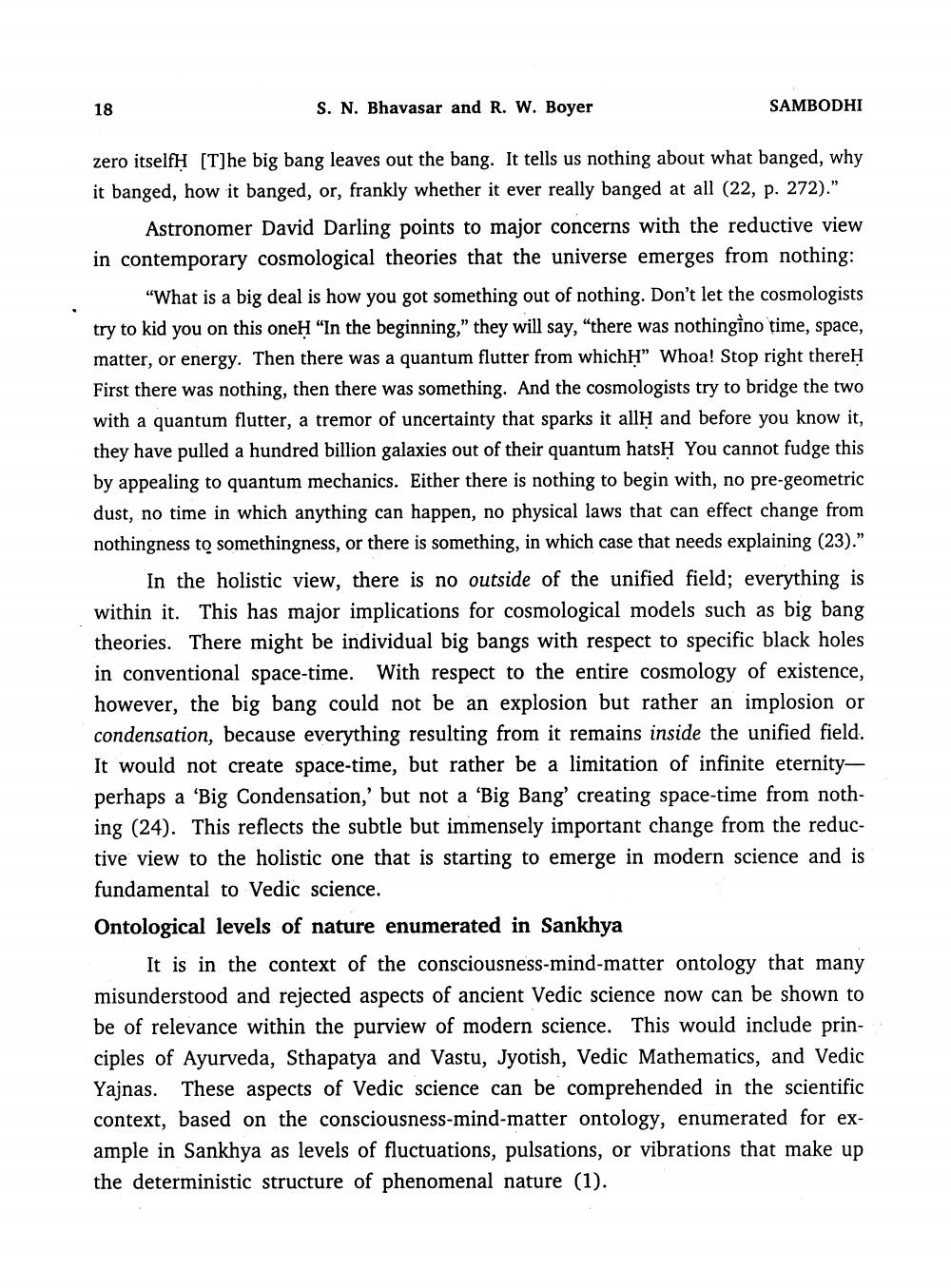________________
S. N. Bhavasar and R. W. Boyer
SAMBODHI
zero itselfỹ [T]he big bang leaves out the bang. It tells us nothing about what banged, why it banged, how it banged, or, frankly whether it ever really banged at all (22, p. 272)."
Astronomer David Darling points to major concerns with the reductive view in contemporary cosmological theories that the universe emerges from nothing:
"What is a big deal is how you got something out of nothing. Don't let the cosmologists try to kid you on this oneĦ “In the beginning," they will say, "there was nothingino time, space, matter, or energy. Then there was a quantum flutter from whichị” Whoa! Stop right there First there was nothing, then there was something. And the cosmologists try to bridge the two with a quantum flutter, a tremor of uncertainty that sparks it allĦ and before you know it, they have pulled a hundred billion galaxies out of their quantum hats You cannot fudge this by appealing to quantum mechanics. Either there is nothing to begin with, no pre-geometric dust, no time in which anything can happen, no physical laws that can effect change from nothingness to somethingness, or there is something, in which case that needs explaining (23).”
In the holistic view, there is no outside of the unified field; everything is within it. This has major implications for cosmological models such as big bang theories. There might be individual big bangs with respect to specific black holes in conventional space-time. With respect to the entire cosmology of existence, however, the big bang could not be an explosion but rather an implosion or condensation, because everything resulting from it remains inside the unified field. It would not create space-time, but rather be a limitation of infinite eternityperhaps a 'Big Condensation,' but not a 'Big Bang creating space-time from nothing (24). This reflects the subtle but immensely important change from the reductive view to the holistic one that is starting to emerge in modern science and is fundamental to Vedic science. Ontological levels of nature enumerated in Sankhya
It is in the context of the consciousness-mind-matter ontology that many misunderstood and rejected aspects of ancient Vedic science now can be shown to be of relevance within the purview of modern science. This would include principles of Ayurveda, Sthapatya and Vastu, Jyotish, Vedic Mathematics, and Vedic Yajnas. These aspects of Vedic science can be comprehended in the scientific context, based on the consciousness-mind-matter ontology, enumerated for example in Sankhya as levels of fluctuations, pulsations, or vibrations that make up the deterministic structure of phenomenal nature (1).




